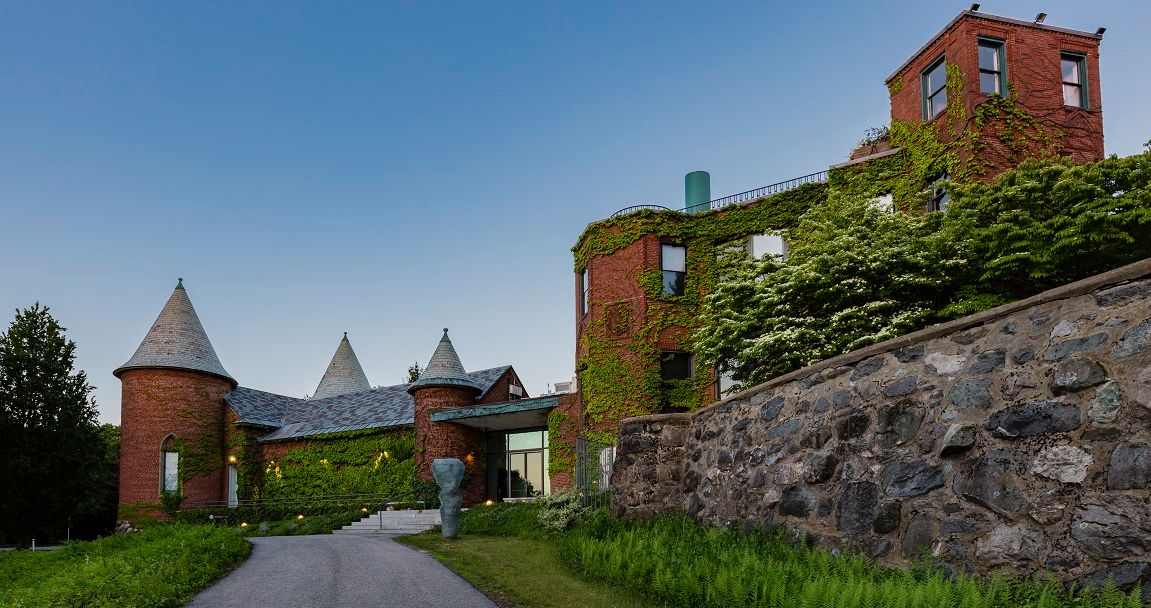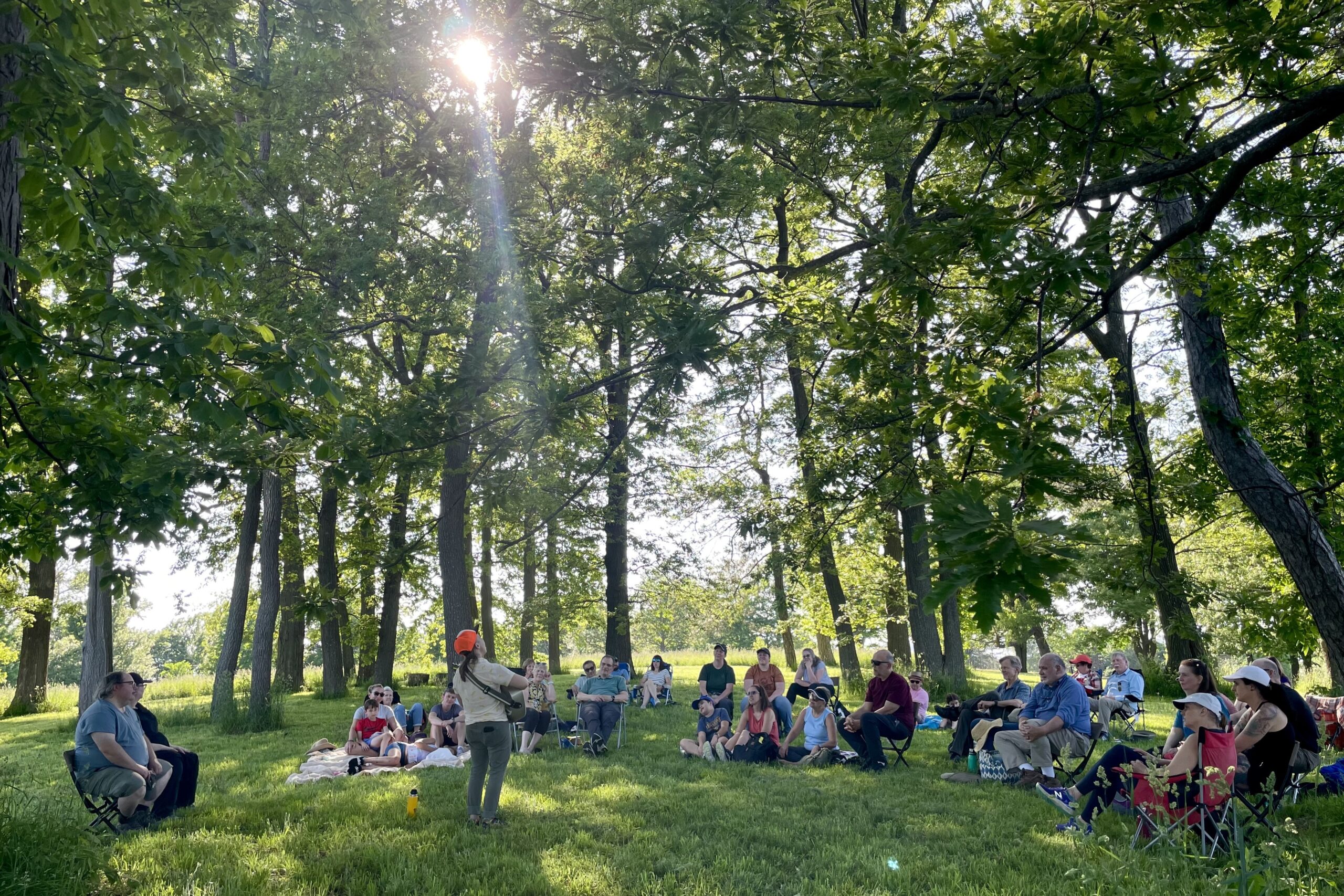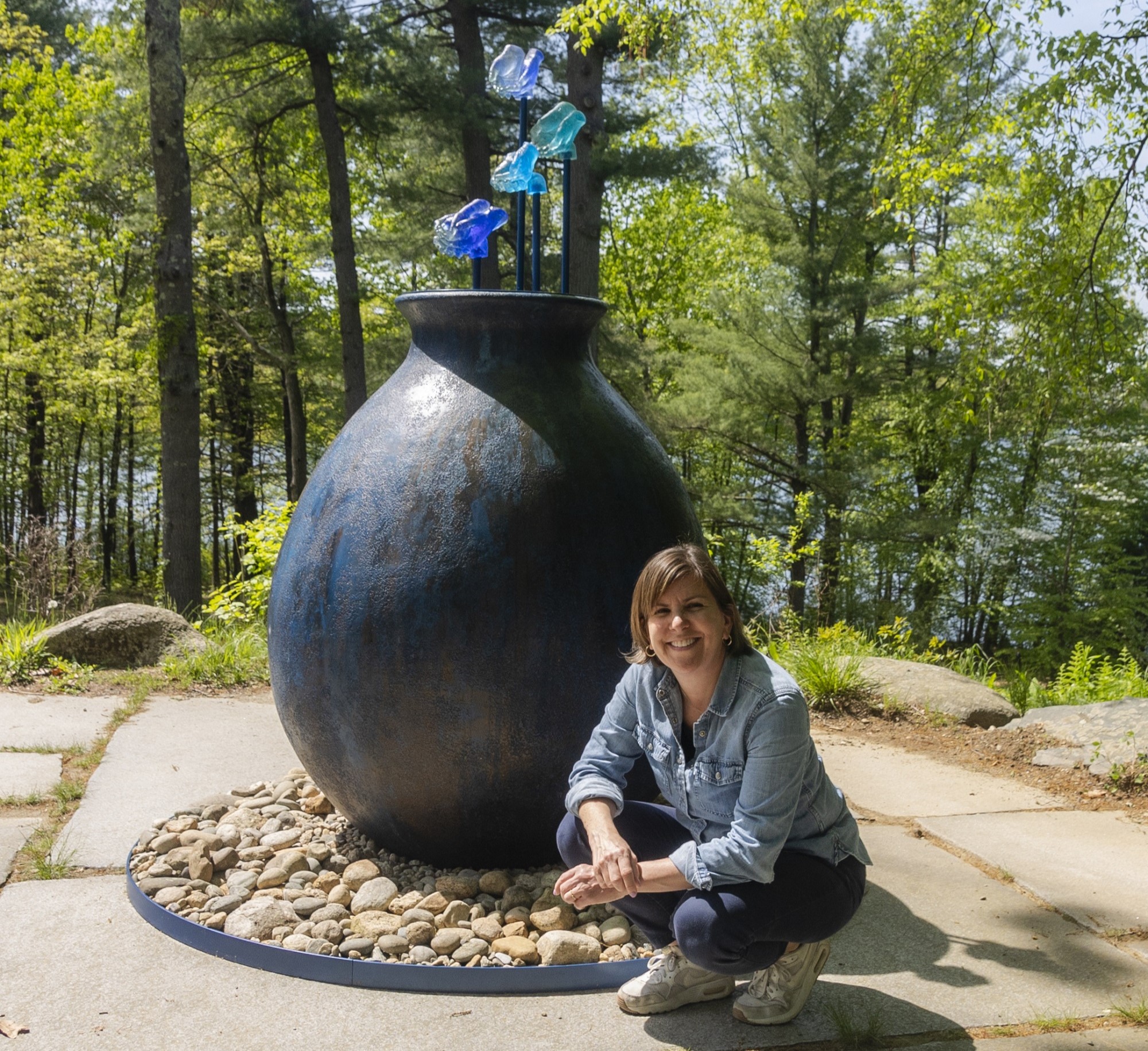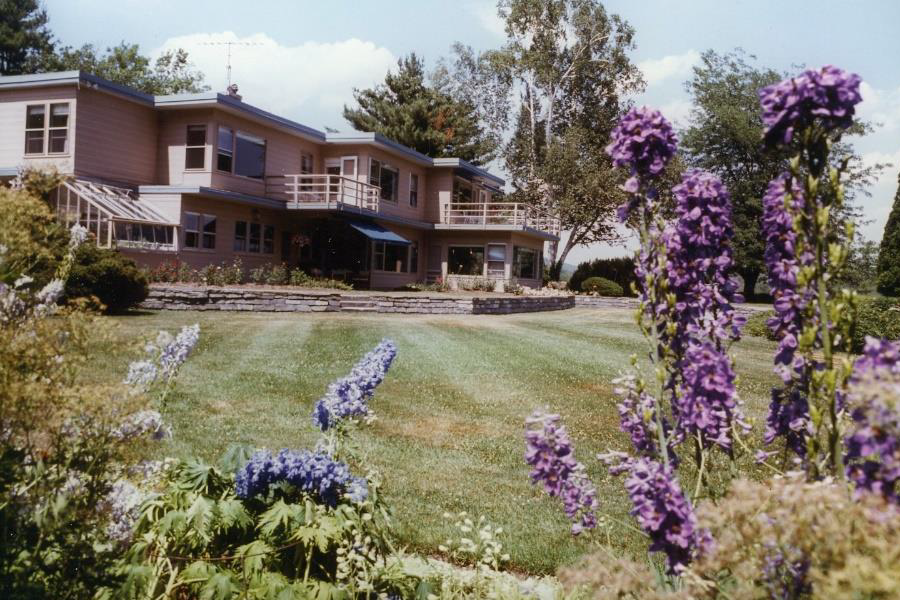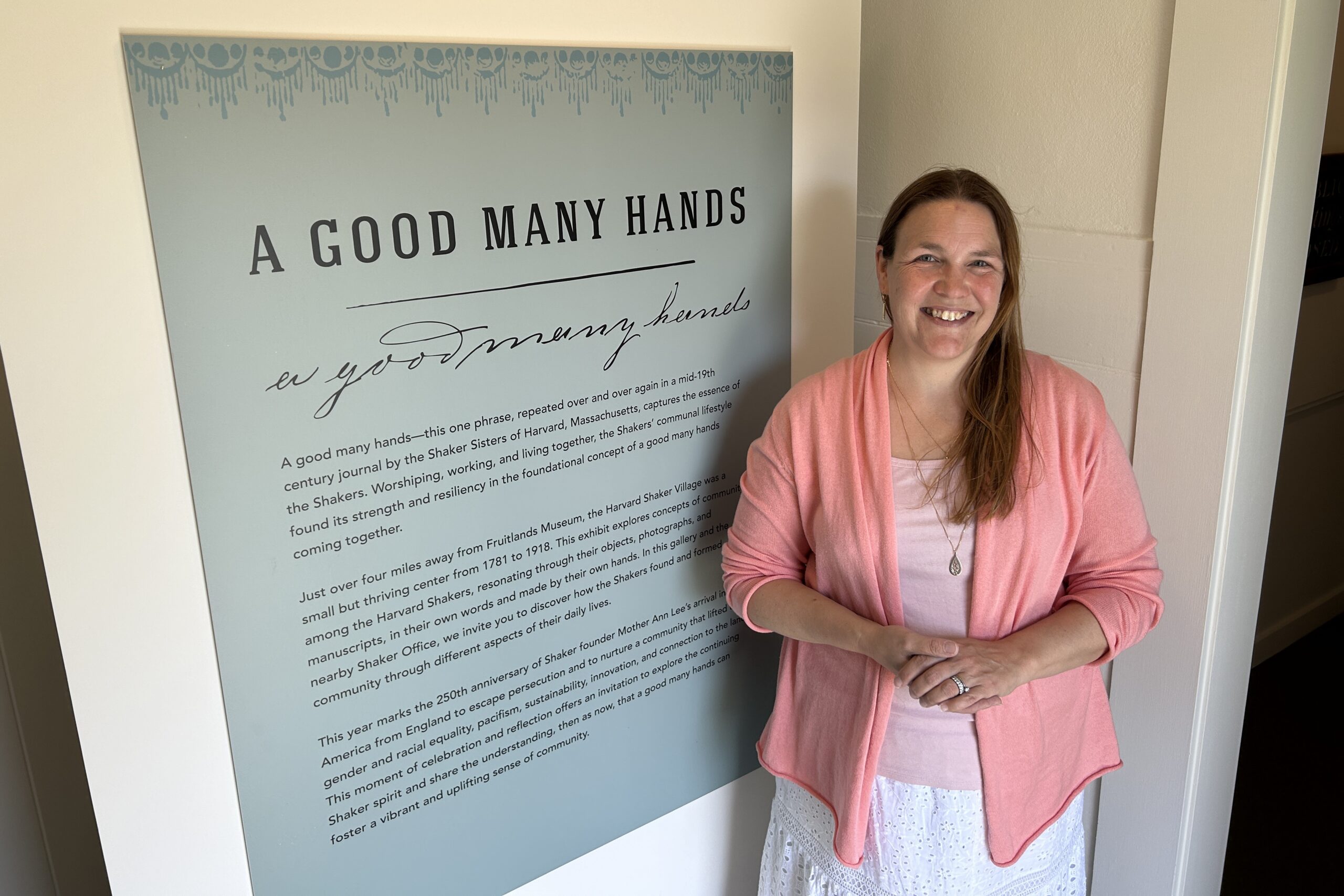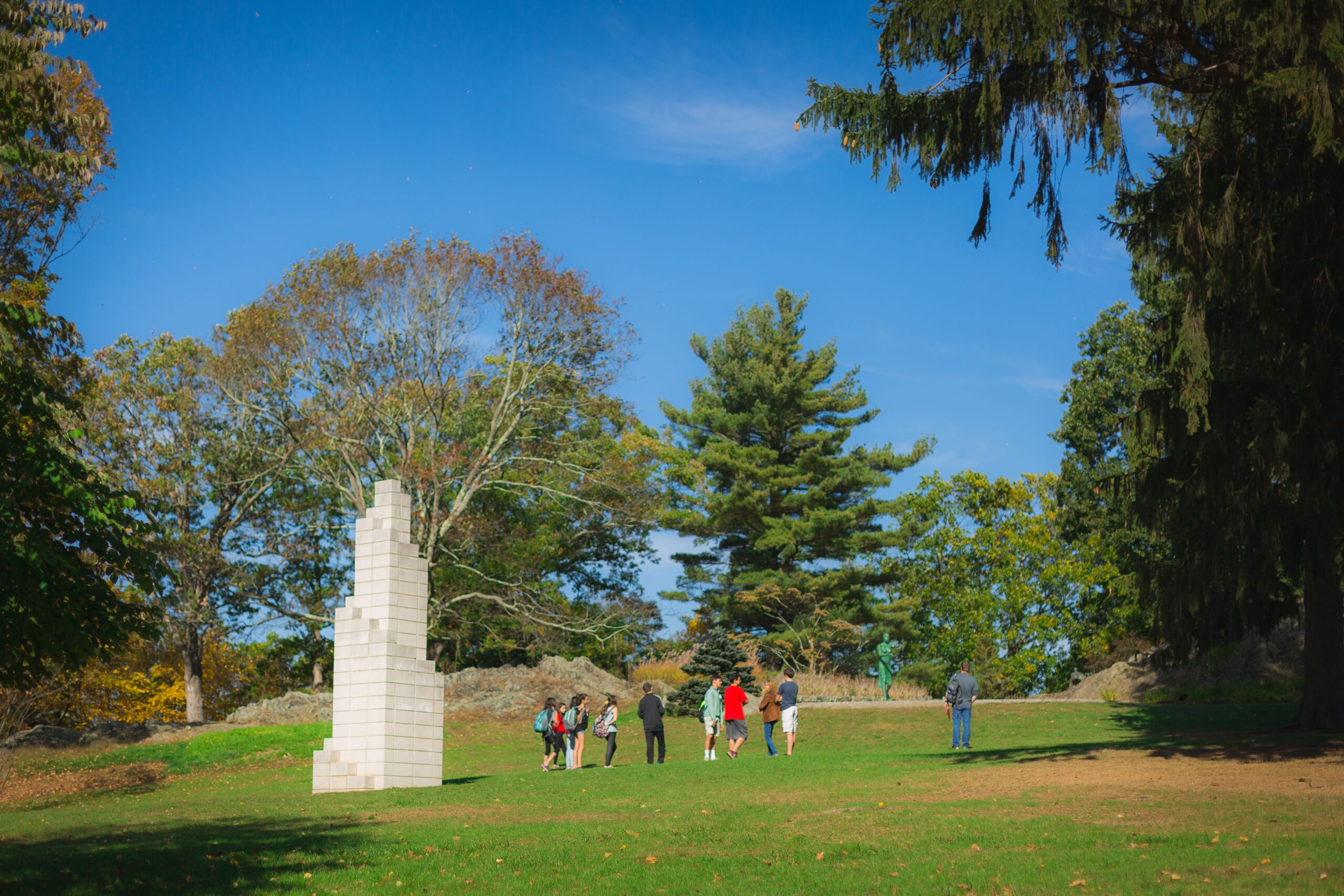
“What’s it made out of? Can you make that face?” the mother asks. The child contorts her expression, mimicking the exaggerated form of artist Jaume Plensa’s Humming. “Stone!” she answers proudly. Some 20 miles from Boston, the grounds of the 28.4-acre deCordova Sculpture Park and Museum in Lincoln are dotted with visitors. From the museum’s rooftop Rappaport Terrace overlooking deCordova’s bucolic grounds abutting Flint’s Pond, families, seniors, students, and other visitors from all corners of the globe can be seen rambling among the park’s 60-plus modern and contemporary sculptures. Zooming out on the grounds from this lofty vantage point, the giants of the park become elemental—the neon pop of powder-coated steel in dialogue with the fluidity of an enormous horsehair curtain moving in the breeze. Some works are on permanent display; others rotate in periodically. “People who visit once or twice a year often say, ‘Everything looks different! How is that possible?’” remarks Senior Curator Sarah Montross. “It’s because as we move in loans and commissions, the place looks different every time.”
Since the museum officially opened to the public in 1950, visitors have flocked to deCordova—some 80,000 a year at last count—to experience art in an unparalleled setting. With a 3,500-piece permanent collection of modern and contemporary art that devotes special attention to New England artists, as well as rotating exhibitions featuring nationally and internationally recognized artists, it’s a perennially relevant and ever changing destination. This autumn, Andy Goldsworthy’s long-awaited Watershed installation joins the cast of sculptures sprouting from rolling lawns and nestled in woodlands. And after officially integrating with The Trustees in July—becoming the newest addition to The Trustees’ portfolio of 118 properties and opening new frontiers for the organization’s mission—deCordova scribes a new chapter in a story that began over a century ago.
DeCordova Sculpture Park and Museum is set on the former estate of Julian and Elizabeth “Lizzie” de Cordova, the son of a Jamaican merchant and the daughter of a prominent Boston family. A self-educated man, Julian achieved prosperity as a tea broker, merchant, investor, and most notably, president of the Union Glass Company in Somerville. Meanwhile, the de Cordovas became passionate world travelers, returning from their adventures with exotic objects and art to fill their 22-room home in Lincoln. In 1910 the couple realized a longtime dream, remodeling the residence to resemble a European castle complete with turrets, and creating a sky-lit Picture Gallery (now the Museum’s Dewey Family Gallery). “Someday my castle will be opened as a museum and dedicated to the youth of the world,” Julian promised.
Heirless after the passing of Lizzie and adult son Dana, Julian gave his estate to the residents of the Town of Lincoln in 1930, with the stipulation that it become a public museum of art and park following his death. (Julian subsequently lived there until his passing in 1945.) Motivated by a dearth of modern art exhibitions and venues for regional artists in the Boston area, the original committee of incorporation sold off the estate’s eclectic collection, using the proceeds to create a museum of regional contemporary art with a strong educational mission. Renovations led by Lincoln-based modernist architect John Quincy Adams began in 1946, transforming the “castle” into a museum, which opened to the public in 1950. The park’s inaugural Outdoor Sculpture exhibition was held in 1966.
Over the subsequent half-century, deCordova has established a reputation for outstanding modern and contemporary art exhibitions in an unparalleled setting, amplified by stellar educational and interpretive programs for all ages. The original mandate’s special focus on New England artists carries through with the invitational deCordova New England Biennial—a coveted venue for regional artists—and with the Rappaport Prize, a $35,000 prize awarded each year to an artist with strong ties to New England.
With all that deCordova offers to the community today, it’s shocking to think how close it came to unraveling. When he became Executive Director of deCordova in early 2015, longtime curator of modern and contemporary art John Ravenal was thrilled. “But,” Ravenal, now The Trustees’ new Vice President for Arts & Culture and Artistic Director for deCordova, adds, “[I] quickly realized that there were some financial challenges.” A disproportionately small endowment for a U.S. museum, compounded by a shrinking pool of leadership donors supporting deCordova at a disproportionately large level, made for an unsustainable model. The future of the institution was at stake, and the stakeholders—including the board and the residents of the Town of Lincoln—were soon at attention. “We set about together trying to solve the problem,” says Ravenal. When he met Trustees CEO Barbara Erickson, Ravenal quickly recognized a strong mission alignment between the two organizations, “but not direct duplication the way there is with [another] art museum. That turned out to be the sweet spot. We share so many values, but we weren’t already delivering the same experience. We could complement each other.” The boards of the two organizations agreed: through a partnership with The Trustees, deCordova would achieve fiscal stability without losing its intended purpose as a museum and sculpture park.
After lengthy negotiations with the Town of Lincoln, which retains ownership of the land and the building (“They are the ultimate trustees of the original gift of deCordova,” Ravenal emphasizes), The Trustees and deCordova finalized plans for integration last March and officially integrated on July 1. In addition, the organizations combined staffs to form a new Arts & Culture division, tasked with developing exhibitions, collections management, and interpretive strategies across The Trustees’ entire portfolio of properties in the Commonwealth.
Today at deCordova, beyond its singular setting and compelling history, a robust calendar of programming offers new reasons to visit all year round, from yoga in the park in the warmer months to guided snowshoe tours in winter, lectures and workshops by exhibiting artists, summer concerts in the café courtyard, and camps for area children. (The private, not-for-profit Lincoln Nursery School also operates on the grounds—the first preschool to be embedded within a contemporary art museum.) “There is a huge range of things that the museum offers to bring people closer to art and nature,” says Julie Bernson, The Trustees’ Associate Director of Learning. “That’s what is beautiful about [deCordova]. There’s an audio tour as well as our mobile app for each sculpture. So, if visitors really want to know what the artist or curator has to say, there are all those ways in.”
And this fall, with the opening of internationally renowned land artist Andy Goldsworthy’s Watershed at deCordova, visitors are in for a profound, immersive experience. The permanent, site-specific installation reveals previously overlooked forces of nature by channeling groundwater runoff from the upper parking lot through a series of drains and pipe into a nine-bysixteen- foot granite shed set into the pond side hill. In wet weather, groundwater pours from a circular stonework outlet in the shed’s rear wall. When the skies clear, the mineral deposits and eventual moss that water leaves behind will mark the past and anticipate the future. Continuing that dialogue between seen and unseen, past and future, inside the museum, a trio of photography exhibitions that Montross describes as “revealing the poetic potential of nature” also opens this fall. [See the Things To Do calendar for details.] It is a not-to-be-missed experience.
“It’s a sort of playfulness; ways in which there’s mystery involved in the natural world,” reflects Montross. It’s through that dialogue— that sweet spot where the interaction of art and landscape change the way each is seen— that deCordova continues its legacy, hand in hand with the Trustees’ vision.
